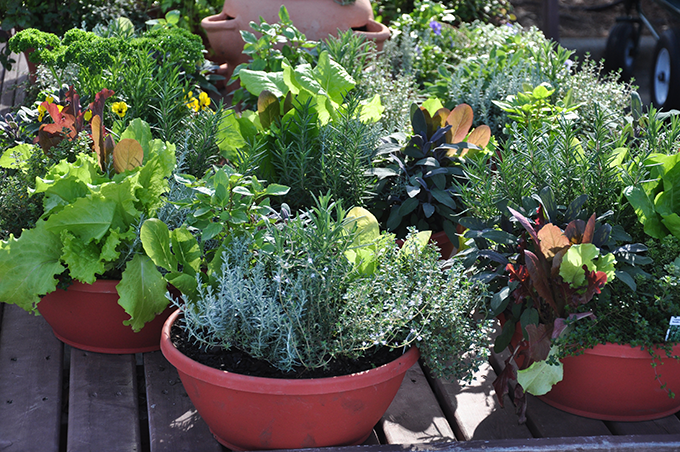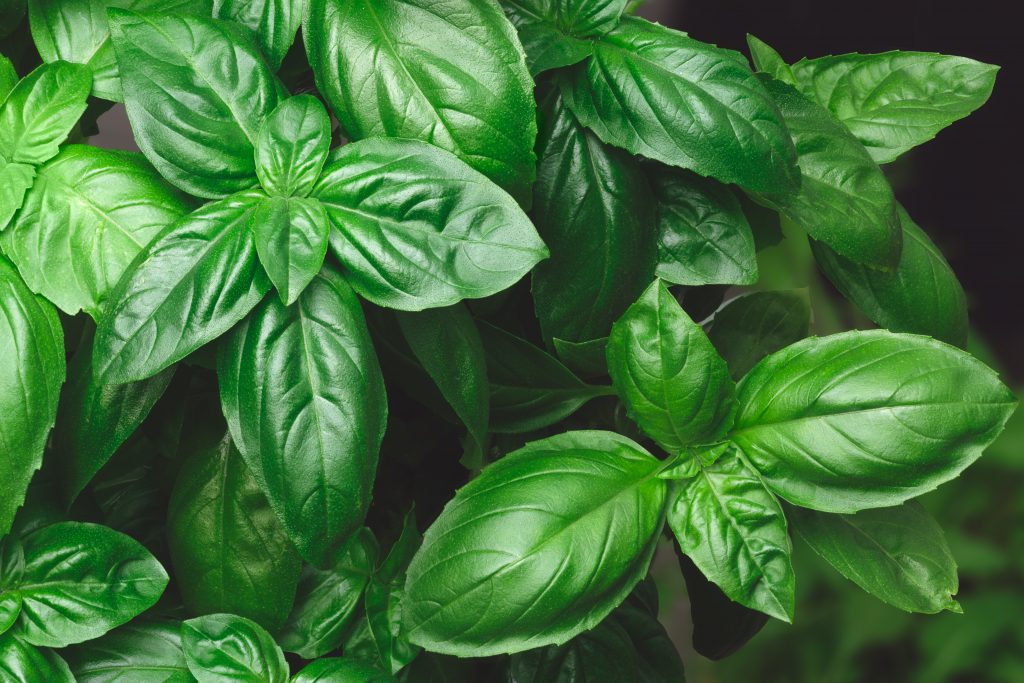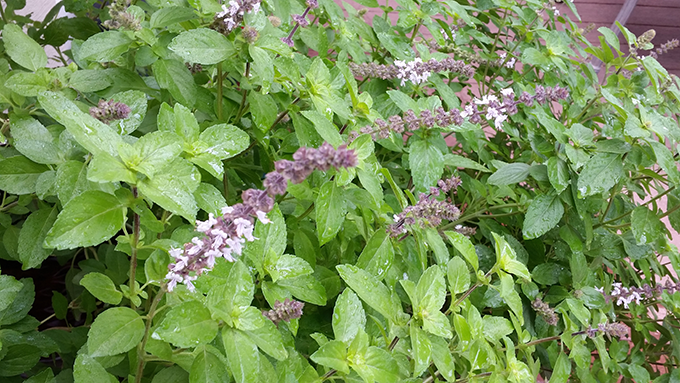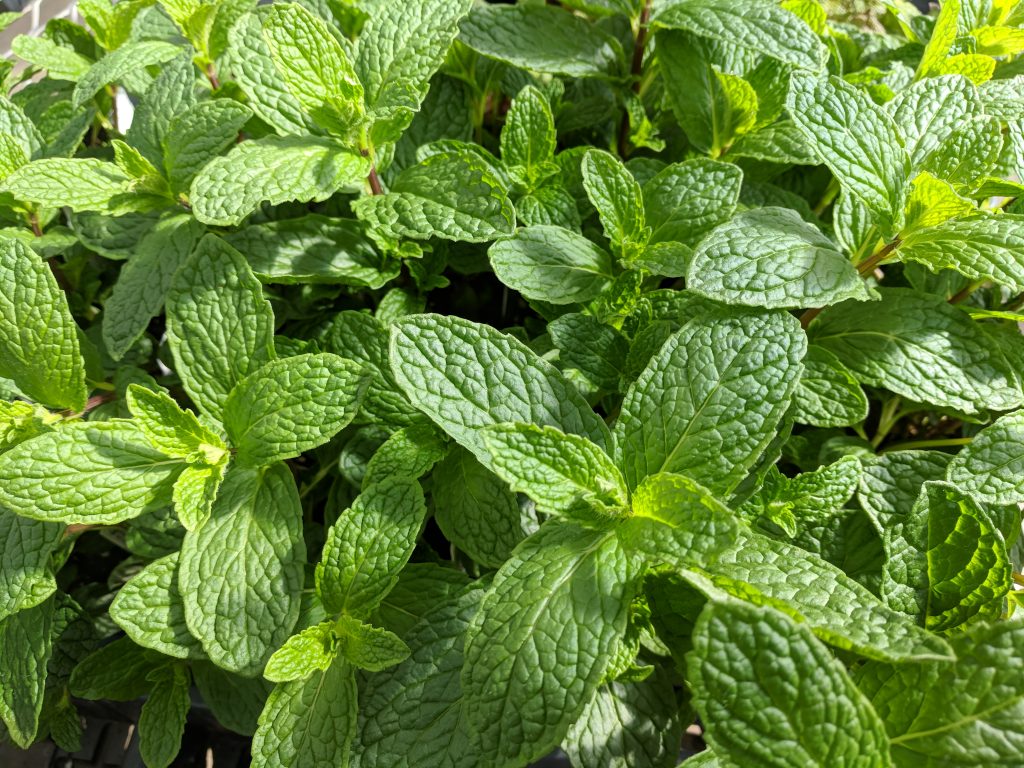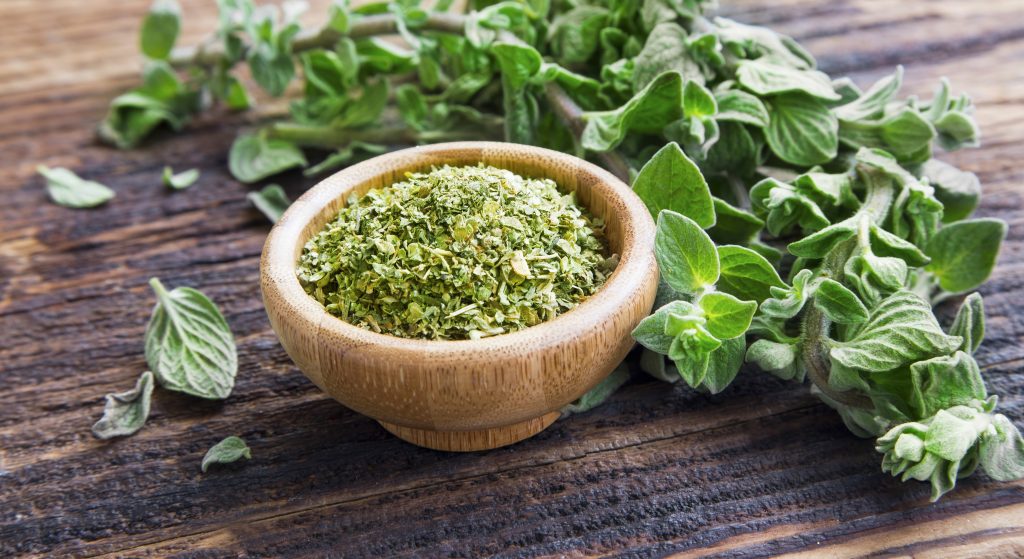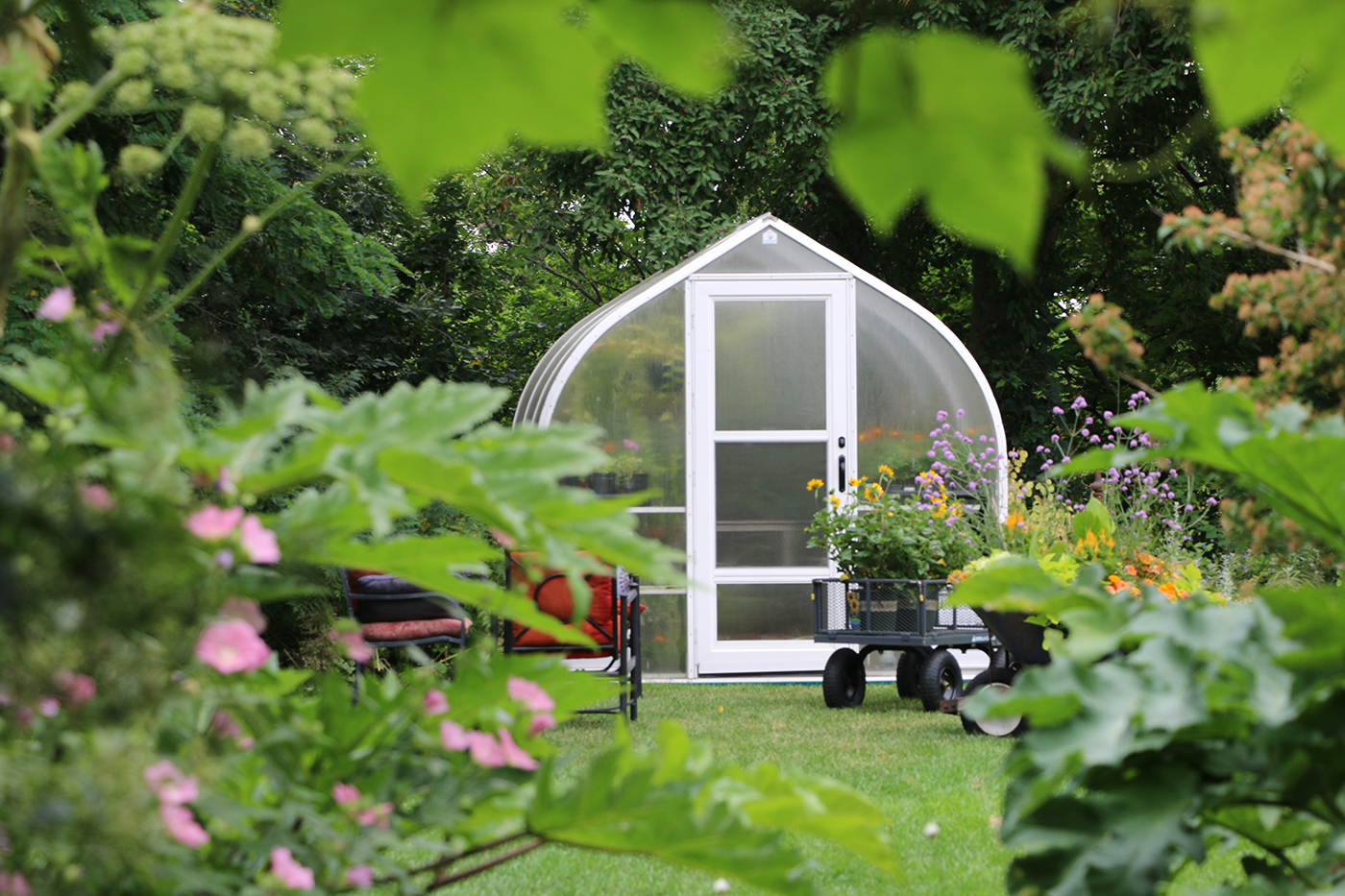A great way to bring your senses alive this summer is to grow herbs.. lots of herbs, and you don’t need an elaborate garden to do it!
There are plenty of herbs that are right at home in containers. Your deck, patio, or balcony can become an herbal oasis… a cutting garden, just steps away from your kitchen.
Tagawa carries an extensive array of herbs all winter, and even more, will be in by mid-April for the summer growing season.
Let’s start with America’s most popular herb: basil
I’m sure there are folks who don’t love the smell or taste of basil, I just don’t happen to know any of them.
Basil is a much-loved ingredient in Italian and Asian cooking. And it’s one of the easiest herbs to grow in containers at home.
Basil is one of those herbs that come in more varieties than you can imagine. Genovese basil, pictured above, has especially large leaves loaded with fragrance and flavor. At around 20″ tall and 15″ wide, it’s an excellent choice for growing in a good-sized container… say two-gallons minimum. Genovese and Italian are the basils most commonly used in pesto.
If you prefer a smaller plant, try Spicy Bush basil. It has tiny but very aromatic leaves and grows to about six inches tall and 10″ wide.
There’s Holy basil, described as “peppery, with notes of clove,” and Thai basil, known for its spicy licorice flavor.
All basils will thrive in sun or part shade, ‘though a little bit of protection from the hottest afternoon sun can be helpful.
The general rule with most herbs is to avoid letting them flower, which can reduce the potency of the flavor in the leaves. But I have to admit: I grow a big pot of African Blue Bush basil (pictured above) and let it flower its little heart out for my honey bees. The leaves of African Blue aren’t nearly as succulent as other basils, but the flowers are very tasty on salads… not to mention a real treat for my “girls.”
Another herb power-hitter: mint
Anytime those of us at Tagawa’s suggests folks should grow mint, it comes with a warning: mint loves to run! Put it in the ground, and it will take off and take over. Mint stems have tiny hair-like roots at each leaf node. When they touch the soil, they root… and root… and root.
All the more reason for those of us who love mint to make sure we grow it in containers! And there’s a lot to love about mint. For example, the seemingly endless varieties of mint. The mint pictured above is Mojito mint. Yup, those mojitos! Then there’s peppermint and spearmint, of course, but also chocolate mint, apple mint, and orange mint. Once all of Tagawa’s herbs are in for spring, our mint display is something to behold!
Mint is also one of the most adaptable herbs. It will tolerate dry or moist soils, ‘though never soggy, and sun or part shade, with a minimum of two hours of sun daily. Many varieties are perennial here. Just keep those aggressive stems away from the soil outside your containers!
Rosemary is for remembrance
Next to basil, rosemary is the plant I most love to brush up against and catch a whiff of pure, rich deliciousness. Give me some sprigs of rosemary, some olive oil, a loaf of good bread and just let me indulge!
But rosemary has more to offer than its aromatic needle-like leaves.
These lovely lavender flowers come every spring (and in fact mine are out now) on a creeping rosemary I’ve had growing in a container for years.
I’ve had it long enough that I don’t even remember the variety, but any of the rosemary’s that Tagawa’s sell will put on similar blossoms. Again, I let it flower for the bees, but pinching off the tiny buds is fine, too
Rosemary loves full sun but demands excellent drainage. The best way to achieve that is to mix 50% cactus mix into the potting soil when you plant it.
These plants are tough, but not quite tough enough to survive our winters. Mine spends the colder months in an unheated but enclosed sunny back porch. It’ll go back outside by late April.
I trim the tips over the winter when I need a tasty boost for soups or sauces. Varieties well worth trying that can thrive in a winter-sheltered container include Arp and Madeline Hill. Tagawa’ even has a BBQ rosemary that can be trimmed and used as skewers for grilling. Yum!
Thyme
The petite leaves of thyme are unmistakable in the world of herbs. Many of the creeping varieties make excellent perennial groundcovers, but culinary thyme can thrive in containers.
Lemon thyme, pictured above, is one of many varieties of thyme that do well in shallow containers with a bit of cactus mix worked in to enhance the drainage. Unlike most other herbs, thyme can be grown in dry shade. That alone makes it a keeper!
Last, and definitely not least, oregano
I love my spicy food, and oregano is one of my go-to’s for waking up my taste buds. (Okay, I admit: I don’t cook all that much, but when I do, I love dishes that call for oregano.)
Most varieties of oregano are right at home in containers. Greek oregano is said to have the best flavor, but others, including Italian and Hot and Spicy are well worth consideration. With occasional light watering, most will over-winter in containers in an unheated garage.
Give oregano full sun and well-drained soil, and dream of Italian or Mexican dishes that await!
A bit about care
All of the herbs I’ve mentioned, (and virtually all container-grown plants) need to be in containers with good drainage. Terra cotta pots are often used to grow herbs because they “breathe” well, something most herbs like.
Culinary herbs benefit from regular trimming. Just be sure never to cut away more than one-third of the plant at a time, leaving enough foliage to help the plant regenerate.
Go easy on the fertilizer for your herbs. A few feedings of fish emulsion over the season should be plenty.
Now, plant and enjoy!
